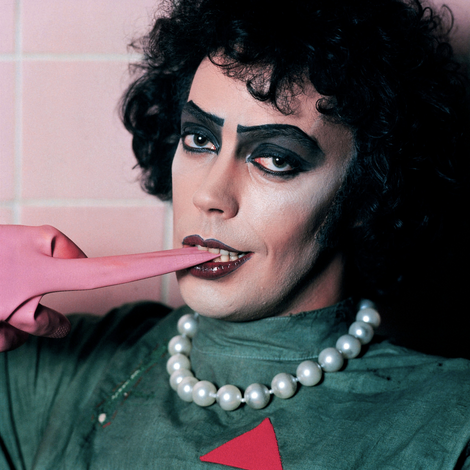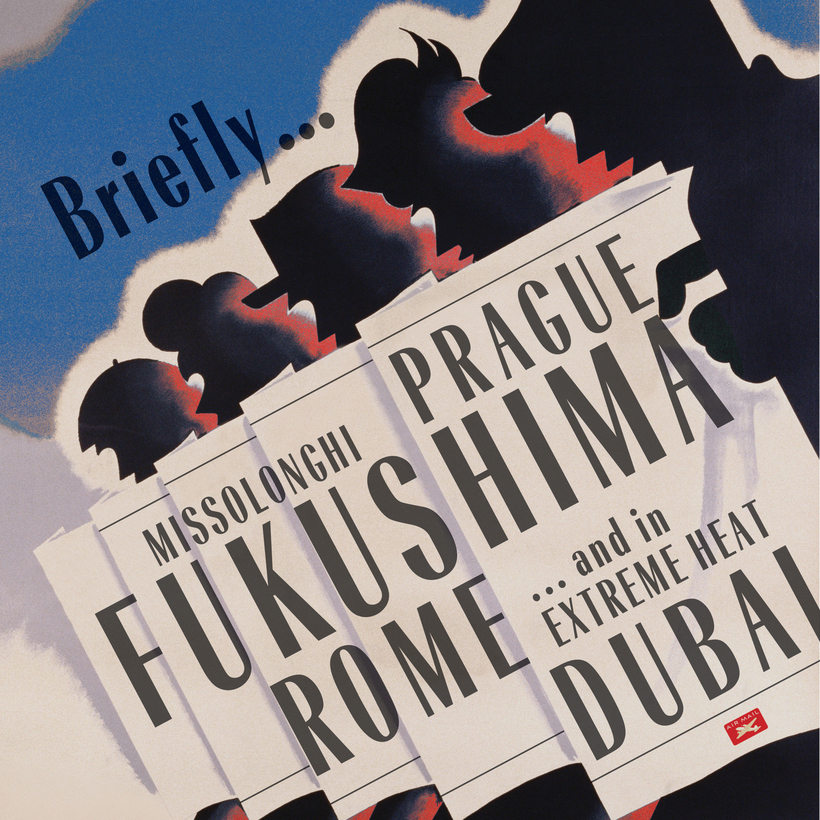In Prague …
Putin takes the throne

Here’s something that, once seen, you can’t unsee: the effigy of a naked Vladimir Putin sitting on a golden toilet that activists placed outside the Russian Embassy in the Czech Republic’s capital last week. The gesture, a protest against the fighting in Ukraine, the imprisonment of Alexei Navalny, and so on, was engineered by a group calling itself “Kaputin.” (Then again, neither can you unsee any of those photos of the real Putin in his preening, hairless, bare-chested glory.)
In Dubai …
A knockoff
Michelangelo’s David has a long history of duplication, and now another precise copy of the statue has been run off—this one using 3D printing and laser scans—and is headed for the Italy Pavilion at the postponed Expo 2020 Dubai. The original, which the artist carved in marble in 1501, remains at the Galleria dell’Accademia, in Florence. London’s Victoria and Albert Museum has perhaps the most well-known replica of the 17-foot nude, a 19th-century plaster cast that comes with an attachable fig leaf, supposedly created at the request of a taken-aback Queen Victoria.
In Rome …
Incognito

Or in any case unrecognizable: that’s how the Gucci family sees the physical manifestation of Aldo Gucci as portrayed by Al Pacino in the upcoming Ridley Scott film, House of Gucci, based on the turbulent Patrizia Reggiani–Maurizio Gucci marriage. (There are turbulent marriages, and then there are turbulent marriages. The latter, such as this one, can involve hit men.) Photos from the set show a version of Aldo, the company’s chairman who died in 1990, that is significantly at odds with the family’s memory of him.
“My grandfather was a very handsome man, like all the Guccis, and very tall, blue eyes and very elegant,” Patrizia Gucci, a second cousin of Maurizio’s, told The Guardian. “He is being played by Al Pacino, who is not very tall already, and this photo shows him as fat, short, with sideburns, really ugly.” The film, which also stars Adam Driver, Lady Gaga, and, as Paolo Gucci, Jared Leto (looking, according to Patrizia, “horrible, horrible. I still feel offended”), will be released in October.
In Missolonghi …
Poetic license
Not to diminish “She walks in beauty, like the night,” but the slightly more mundane “Pay … the sum of four thousand pounds sterling” might be the most important line the noted philhellene Lord Byron ever wrote. “As Greece celebrates the bicentenary of its war of independence, a banknote unearthed by the Observer in the country’s state archives sheds new light on the poet’s fabled generosity,” reported The Guardian. The money, emergency funds for a fleet to defend Missolonghi, was the equivalent of nearly half a million dollars today.
“His financial contribution was crucial,” the Byronic scholar Roderick Beaton told the newspaper. “The Ottoman Albanian troops who were besieging Missolonghi suddenly disappeared as soon as word got out that Byron had lent this money and the fleet was sailing out of Hydra and Spetses.” Shortly before he died of fever in the port city, in 1824, Byron said, “I have given [Greece] my time, my means, my health. And now I give her my life! What could I do more?” Well, maybe scribble just one final check …
In Fukushima …
Washed Out
So you’ve suffered a nuclear meltdown and a full decade’s worth of the irritating P.R. issues that go with that. What better way to turn the tide of public opinion than to have a cute, animated aquatic character declare that, yes, even though radioactive, tritium-contaminated water is about to be released into the sea, everything’s going to be O.K.? But the green-and-white, rosy-cheeked spokesfish, nicknamed “Tritium-kun” (Little Mr. Tritium) by detractors, lasted only a day in government flyers and a video designed to spin the million-ton water dump as a good thing before swimming off into forced retirement.
“Experts say tritium is harmful to humans only in large doses, and that with dilution the treated water poses no scientifically detectable risk,” reported The Guardian, adding that “local fishing communities say the water’s release will destroy a decade of hard work to rebuild consumer confidence in their seafood.” As Katsuo Watanabe, an 82-year-old Fukushima fisherman, told the Kyodo news agency, “It seems the government’s desire to release the water into the sea takes priority over everything. The gap between the gravity of the problems we face and the levity of the character is huge.” And it’s not just Katsuo Watanabe. Neighboring South Korea and China were none too pleased, either.
In extreme heat …
The white album
One priceless moment in This Is Spinal Tap has Nigel Tufnel, played by Christopher Guest, trying to talk himself into liking the band’s unexpectedly all-black album cover. “There’s something about this that’s so black,” he says, thoughtfully. “It’s like, How much more black could this be? And the answer is ‘None.’” Now, scientists who have been working on the white equivalent—How much more white could this be?—say that they, too, can answer with an emphatic “None.” A new white paint designed at Purdue University is said to reflect 98 percent of incoming light, instead of the typical 80 percent for white paint, and is therefore 40-degrees-Fahrenheit cooler. “We think this could be used like air conditioning in hot climates,” one researcher, Xiulin Ruan, told The Times of London. “This helps with climate change twice over. First it doesn’t use power. Second, an air conditioner just moves heat outside—the heat stays on Earth. Our cooling sends heat into deep space.” Now just explain that to David St. Hubbins and Derek Smalls.
George Kalogerakis is a Writer at Large for AIR MAIL


